Vasari tells us that, prior to his death at Rome in 1564 Michelangelo had burned “a large number of his own drawings, sketches and cartoons so that no one should see the labors he endured and the ways he tested his genius, and lest he should appear less than perfect.” It is partly because of the artist’s desire for perfection that his graphic work is so rare and valuable: even Leonardo, his nephew and heir, was obliged to pay a high price for a group of his drawings that came onto the Roman market after Michelangelo’s death. These were probably the ones that Leonardo would donate to Cosimo I dei Medici around 1566, together with the Madonna della scala.
When, in the second decade of the seventeenth century, Michelangelo Buonarroti the Younger decided to devote a series of rooms in the family house on Via Ghibellina to the memory of his great ancestor, the Madonna della scala and part of the drawings given to the Medici were returned by Cosimo II.
Many of the drawings were collected in volumes at the time, but the ones that were considered most beautiful were framed and hung on the walls of the new rooms: for example, Cleopatra in the Scrittoio, one of the designs for the facade of San Lorenzo in the Camera della Notte e del Dì and the small cartoon for a Madonna and Child in the Camera degli Angioli. The collection of Michelangelo’s drawings owned by the Buonarroti family was the largest in the world at the time, and it remains so today, with its over two hundred sheets, in spite of the serious inroads that have been made into it. In fact, the first loss came at the end of the eighteenth century, when the revolutionary Filippo Buonarroti sold some drawings to the painter and collector Jean-Baptiste Wicar; and the second in 1859, when Cavalier Michelangelo Buonarroti sold more of them to the British Museum. Cosimo Buonarroti the last direct heir of the family, died in 1858. He had been the owner of the greater part of Michelangelo’s papers and he left them, to the public in his will, along with the house on Via Ghibellina and the objects contained in it. From that time on, the collection of drawings remained on display in frames and showcases, and it was not until 1960 that they were rescued from this predicament, which had resulted in considerable damage to the sheets. Taken to the Gabinetto dei Disegni e delle Stampe of the Uffizi, they were restored and brought back to Casa Buonarroti in 1975.
As the demands of conservation make it impossible to place the graphic works permanently on show, only small samples of the collection are displayed in rotation in this room.
Click on the image to open the card.
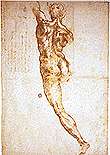 |
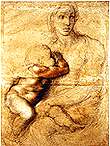 |
| Nude from the back | Madonna and Child |
| . | |
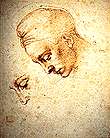 |
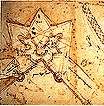 |
| Studies for the Head of Leda | Study of Fortification for the Porta al Prato of Ognissanti |
| . | |
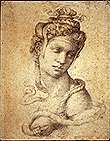 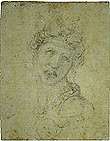 |
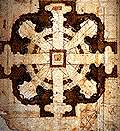 |
| Cleopatra | Plan for the Church of San Giovanni dei Fiorentini |
